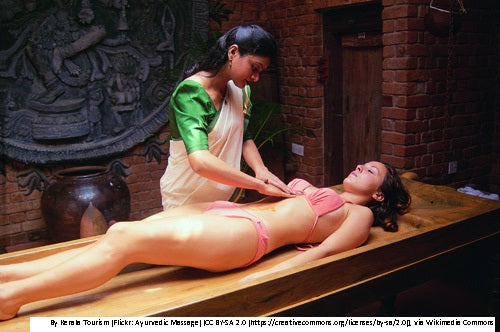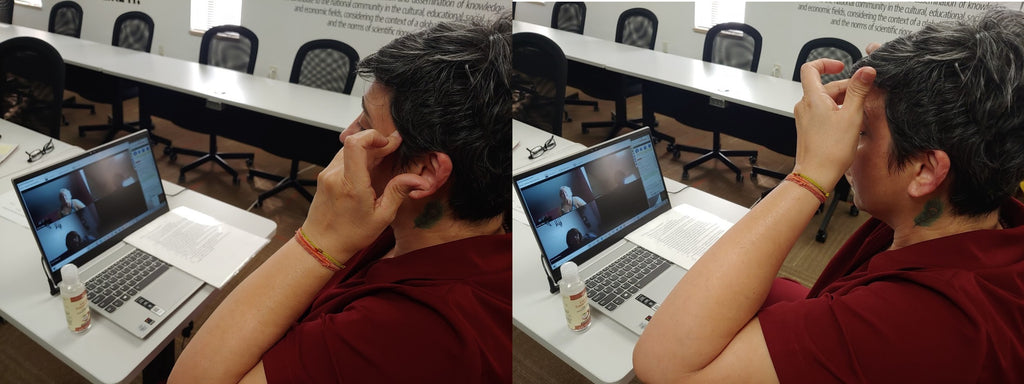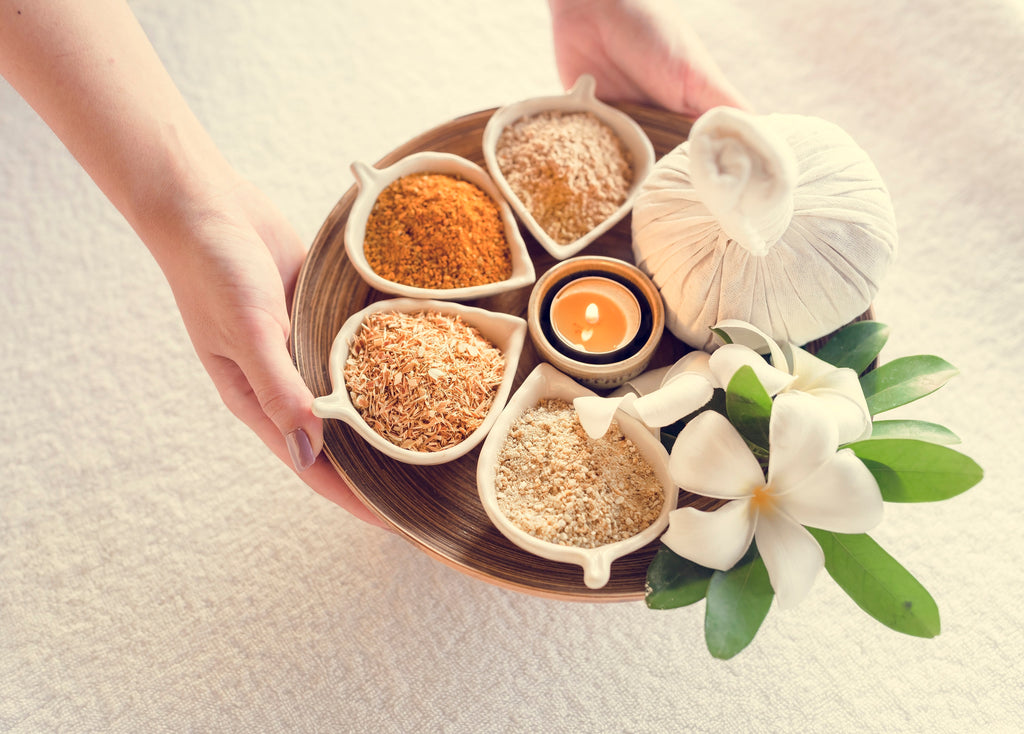Ayurvedic body, facial and spa services encompass an arsenal of ancient treatments and rituals that include facial, hand and foot services, Shirodhara, medicated oils, massage, full-body exfoliation, partial body treatments, and more. All of these ancient practices can be used in today’s modern treatment room with minimal modifications to achieve beauty and wellness.
Ayurvedic Facial Service
An example of an Ayurvedic treatment available today is the Ayurvedic facial. This facial service can be provided in a variety of different protocols. An 8-step, 60-minute Ayurvedic facial protocol could be executed as cleansing, facial massage, herbal steaming or compress, exfoliation, facial mask, nurturing facial pack, toning, and moisturizing.
Skin care products for an Ayurvedic facial should primarily use items that are natural and/or can be orally consumed, such as grocery or kitchen stock which include: almond oil, almond powder, aloe vera, ashwagandha powder, avocado, banana, chickpea powder, cinnamon, cloves, coconut oil, coffee, corn/barley powder, cucumber, egg, eucalyptus, ginger, grapes, honey, lemon, lemon juice, milk, mint, multani mitti (fullers earth), neem powder, orange, papaya, rice powder, rose powder, rose water, sandalwood, sarsaparilla powder, sesame oil, tomato, tulsi powder, vetiver, watermelon, turmeric, and many other herbs and spices.
Ayurvedic Skin Considerations with Product Choices
The skin is the largest organ of the body, acting as a the first defense line from the outside world. It functions as a physical indicator of the subtlest mechanisms of our mind and body. It is a mirror of the internal state of an individual, revealing the condition of the physical body and the emotional state.
The nervous system influences the complexion and appearance of skin. The many emotions, such as fear, rage, anger, grief, joy, excitement, etc., will show a red, flushed, pale, dull, or pasty color skin reaction.
Executing a professional Ayurvedic facial would include selecting the correct products to balance these skin reactions. Aloe vera might soothe a reddened skin, while papaya or rice powder might brighten a dull, depressed, or sullen complexion. Product selection, protocols, and use are covered more extensively in an appropriate Ayurvedic continuing education class.
This would include learning the theory of Tridosha. This determines a person’s constitution and how to personalize Ayurvedic services based upon a client’s individual Dosha. A client’s Dosha would include factors such as skin condition and overall health.
Mind-Body Medicine
Ayurveda is partly known as a mind-body complementary medicine system. Mind-body medicine, both ancient and modern, suggests that the fundamental cause of imbalance is stress, which produces hormonal imbalances. Stress can be anything that overburdens your natural balance of energies. Stress factors may be physical, psychological, or spiritual. All three of these stress factors can affect the skin, body, and/or emotional well-being, which could result in a less than desirable appearance.
This information and more is shared in our Les Nouvelles Esthetiques & Spa magazine article. To view the article in full, please click HERE!
To learn more about Ayurvedic services, please register for quality, affordable, professional training at: https://ceinstitute.com/collections/ayurvedic

#ayurveda #ayurvediccare #bodywork #bodyworker #facial #esthetics #esthetician #cosmetology #health #ancientritual #ancienttreatment #spiritualstress #mindbody #mindbodymedicine #skin #skincare #ayurvedicbodywork #ayurvedictreatment #massagetherapist #massage #massagetherapy














